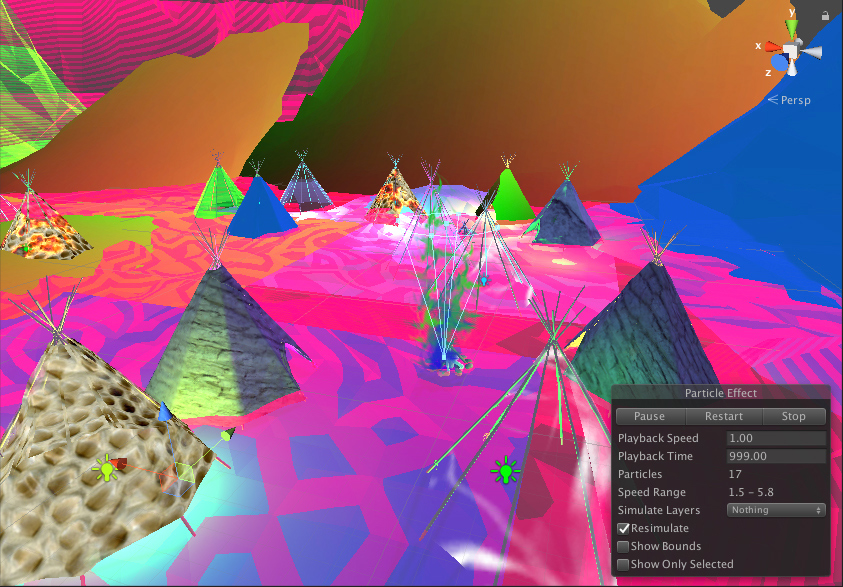Teaching Indigenous Youth to Imagine and Create their Own Futuristic 3D Digital Environments
by Waylon Wilson
June 14, 2019
Here at the Initiative for Indigenous Futures (IIF) and Aboriginal Territories in Cyberspace (AbTeC), we are dedicated to Indigenous perspectives and imaginings of the future. In my research as a Master of Design student, I examine interactive practices of Indigenous peoples, especially of my own Tuscarora Nation. By developing a better understanding of the principles behind cultural practices, such as wampum belts and traditional games, we can better understand how to utilize modern technology as a tool in which we can embed our contemporary culturally perspectives for future generations. What I have observed is that visions of the future imaginary and alternative realities can be realized through numerous forms of media.
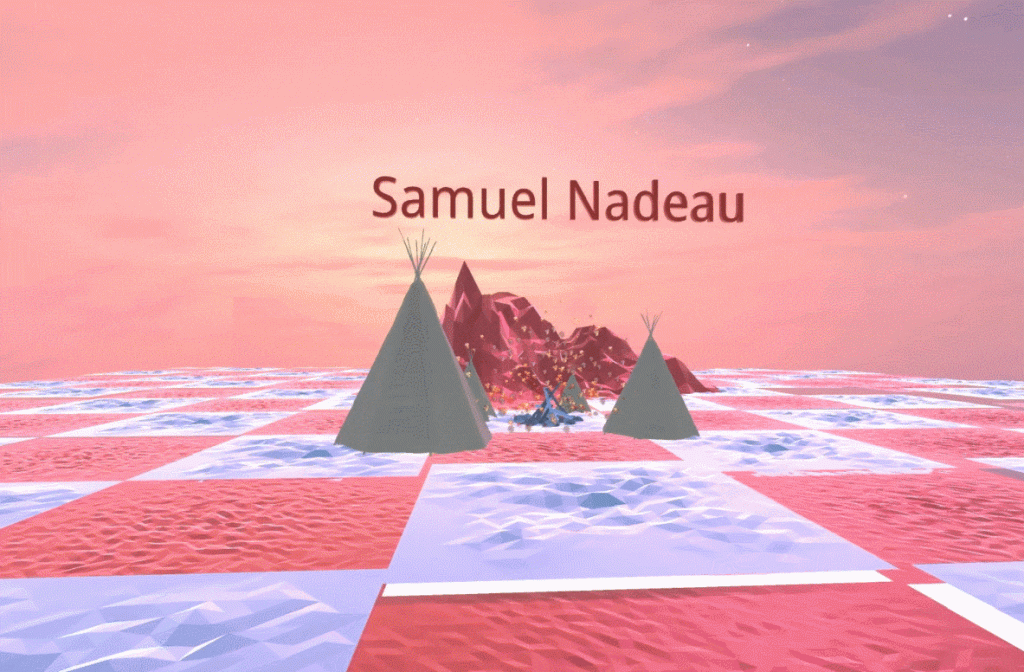
I recently represented AbTeC/IIF as an assistant instructor during a mini workshop series led by Stéphane Nepton and Andrea Gonzalez, co-founders of Uhu labos nomades. Uhu labos nomades is a non-profit that supports the perseverance and academic success of Indigenous Youth through digital arts immersion workshops and conferences; hosted both in schools and in community. Uhu places great importance on issues related to low retention rates, loss of identity, and sustaining cultural health. They focus on the enhancement, dissemination, and transmission of Aboriginal culture through digital arts, which is for them an essential bridge between elders and the current generation.
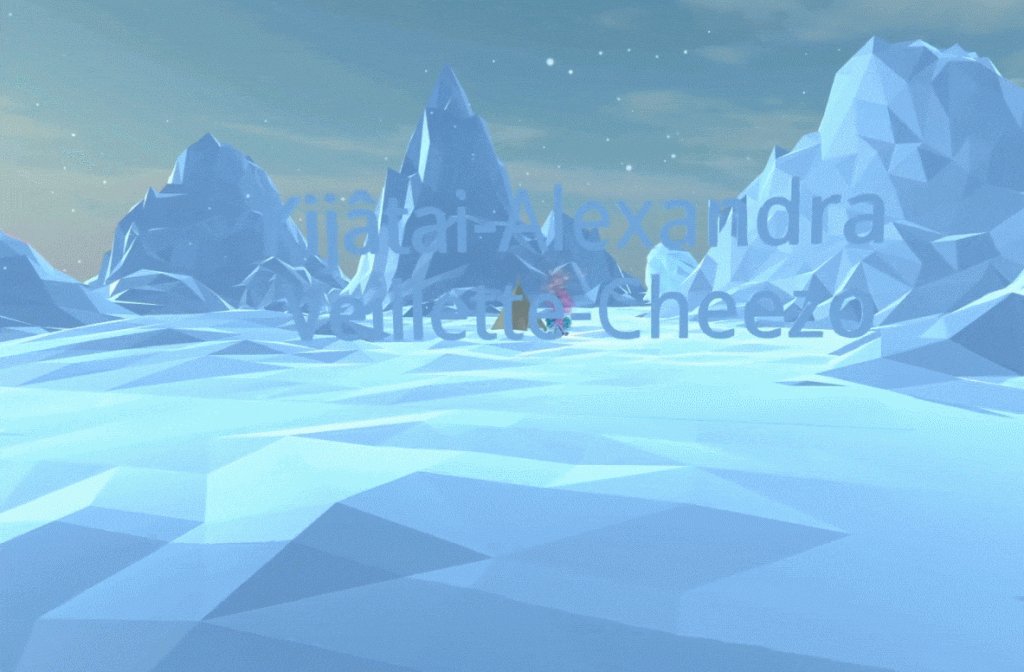
Uhu collaborated with Native Montreal and Concordia’s Office of Community Engagement (OCE) to assemble a 4-part workshop series that introduced Indigenous Youth to the process of imagining and creating their own 3D environments, complete with visual effects such as weather. Uhu, with the help of the OCE, reached out to us about the workshops. There were eight Youth who participated in the workshops of varying backgrounds with little to no experience in digital media creation. Specials guests, Jason Edward Lewis and Skawennati, co-founders and co-directors of AbTeC and IIF, greeted the participants one day and provided a tour of IIF’s creative headquarters. This was an exciting opportunity for participants to see where we build our digital imaginings, experience one-on-one time to ask questions about our creative process, and gain some insight into the collaborative environment of Indigenous future-making. With Stéphane’s instruction, participants took a hands-on approach to creating a world of their own imagining with virtual 3D tools.
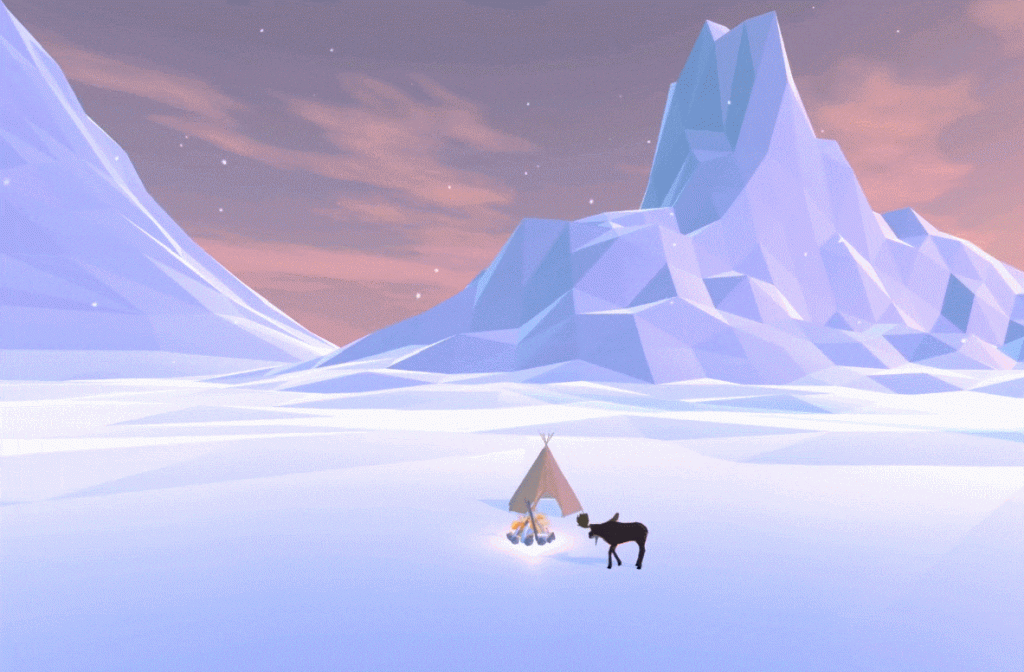
When the time came for the first workshop, Mother Nature had imagined her own visual effects and sent a radical blizzard to welcome each of us! However, the storm didn’t stop our dedicated participants! Eager to dive into some digital-3D fun, several participants arrived, including two who came all the way from Quebec City! Stéphane, a professional visual effects artist, demonstrated the creative and persuasive abilities that visual effects could have in a viewer’s experience with digital works of art. Visual effects are illusions and manipulated imagery that have been added to a videogame’s gameplay that give the gamer a more life-like or immersed experience. Examples of common visual effects in games are animated elements such as smoke, fire, rain, fog, or any kind particle emissions such as sparks and fireworks. Stéphane demonstrated that visual effects can in fact be a self-standing work of art.
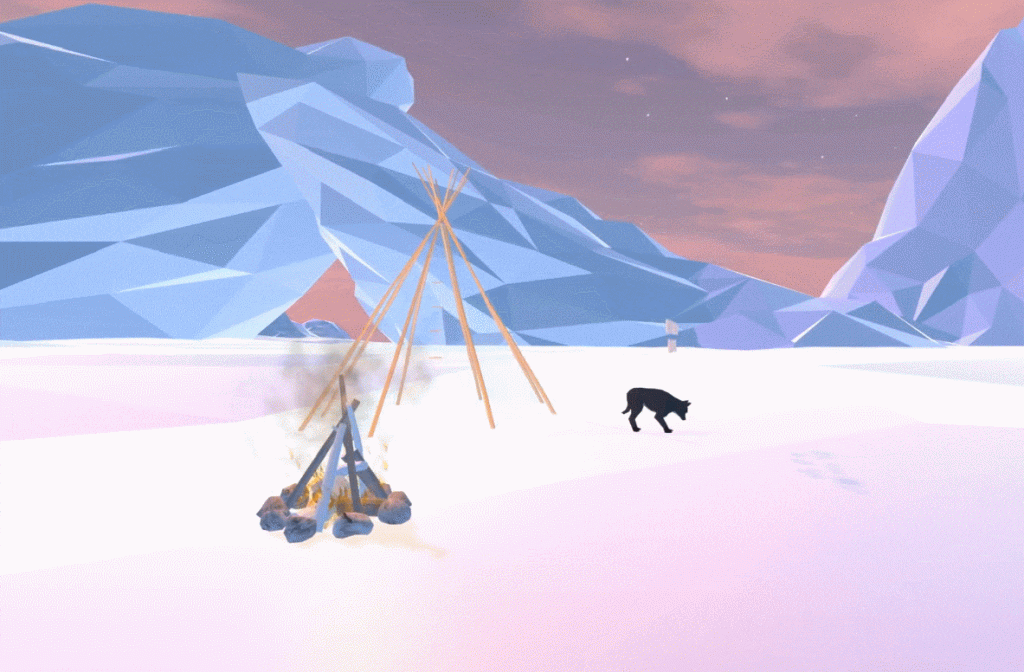
Participants learned how to use free gaming engines to create digital 3D worlds as a form of expressing oneself in a virtual environment. Using premade 3D models such as mountain faces, rocky terrains, and other earth textures—provided by Stéphane—students assembled landscapes of their own desire and imagining. Students who had next to no experience in using computer programs gained competencies; by the end of this series, they had no problem performing basic 3D building tasks and creating special effects.
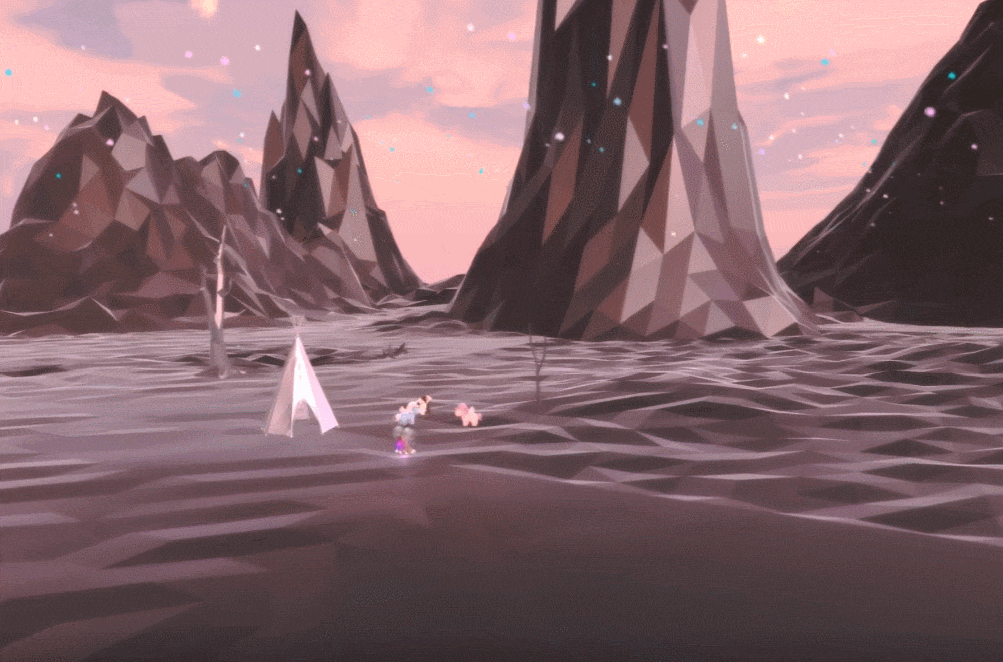
Once the students had learned how to create a basic 3D environment, they were then introduced to how to simulate weather, fire, snow, rain, and wind. Stéphane walked participants through customizing 3D effects tools to realize the designs they had in mind. The results resembled futuristic depictions of landscapes typically associated with Indigenous nations in the Great Plains such as teepee villages; these designs juxtaposed themes of old and new knowledge and practices within a single environment. Students shaped their landscapes to imagine environments with unique narratives, what feel like multiple visions of alternative realities.
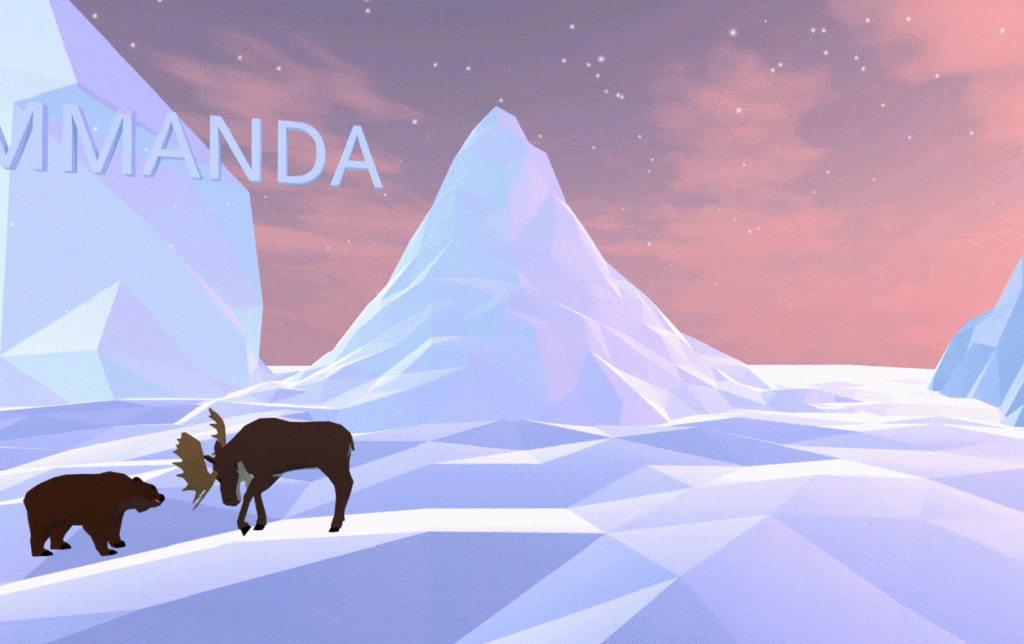
In the end, participants had an exciting time expressing themselves through these 3D digital tools, and some even informed us that they had downloaded the software to carry on their work at home, developing their environment and imagining new ones! Native Montreal and Uhu labos nomades hosted a brief awards event to showcase the students’ work and to recognize the unique qualities each student displayed in the workshops. Attendees could experience the worlds through a virtual reality headset; this gave both the creators and audience an entirely new, life-like encounter with the artworks.
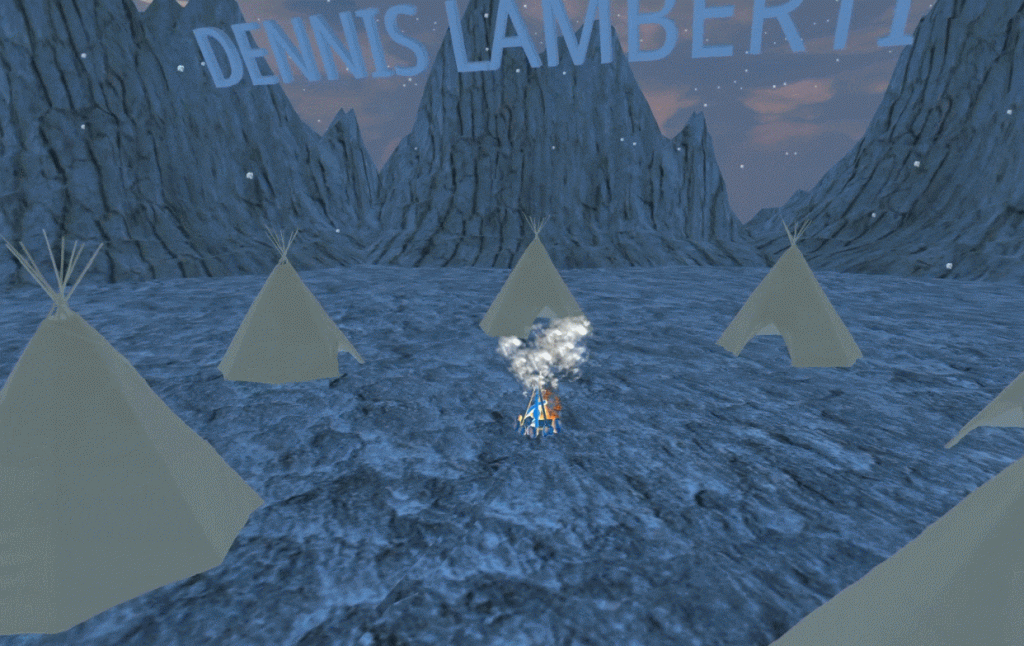
For my part, it was exciting to be part of the students’ digital environments and the environment of the classroom and maker-setting. The collaborative makerspace that we shared as learners and media makers reflected how AbTeC and IIF create camaraderie and support in imagining futures together as Indigenous peoples. Being part of this experience, sharing these digital tools while empowering each other to imagine and create futuristic digital environments, serves as a good reminder to imagine and create our own Indigenous futures here in the real world.
